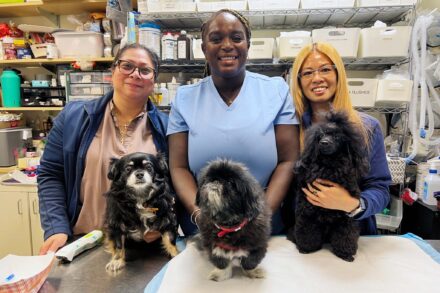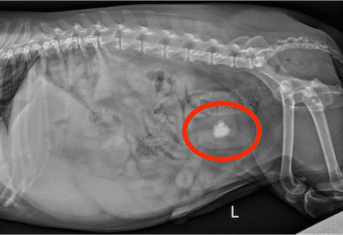Sudden Acquired Retinal Degeneration Syndrome (SARDS) in Dogs

Sudden Acquired Retinal Degeneration Syndrome (SARDS) in Dogs
One of my patient’s winter vacations was cut short last week when her owner noticed she was bumping into the furniture and reluctant to jump on and off the bed. A quick trip to the Animal Medical Center and consultations with internal medicine, neurology and ophthalmology specialists determined this cute pug, named Amanda, was blind and suffering from sudden acquired retinal degeneration syndrome or SARDS.
SARDS not to be confused with SARS
Sudden acquired degeneration syndrome was first described in dogs in the mid 1980’s. The acronym SARDS is very similar to SARS, which was a highly contagious respiratory disease originating in China in 2002 and causing hundreds of deaths worldwide. SARDS is not contagious, is not fatal and does not cause respiratory signs, but dogs with SARDS do have clinical signs beyond the acute blindness.
Hungry, thirsty and then blind
Prior to the loss of her vision, Amanda’s owner noticed she was eating more, drinking more and urinating more. Amanda had gained a pound and a half over 6 months. Since the cause of SARDS remains elusive, the physiology behind the increased thirst and appetite are unknown, but two thirds of dogs diagnosed with SARDS have these clinical signs. A month prior to the vision loss, Amanda had been treated for redness in her eyes, another common finding in SARDS dogs.
A textbook case
Amanda was nearly a textbook case of SARDS. In addition to eating and drinking more, she is a pug. Pugs, dachshunds, miniature schnauzers, cocker spaniels and maltese dogs are at increased risk for developing SARDS. Elevations in liver tests are common in dogs with SARDS and Amanda has not one, but two different liver tests that were above the normal range.
Electrorentinogram
In dogs with SARDS, the retina (or light perceiving lining of the eye) stops working but still appears normal when a veterinarian looks at the back of the eye using an ophthalmoscope. An electroretinogram is the test used to make a diagnosis of SARDS. The electroretinogram flashes bright lights directly at the retina and measures the brain’s electrical activity in response to the flashing lights. Dogs with SARDS show no brain electrical activity in response to the light flashes.
Living with a blind dog
Watching your suddenly blind dog learn to navigate the world without vision can be heartbreaking. In reality, as long as you don’t rearrange the furniture, she will quickly learn to cope and have an excellent quality of life. There are a number of resources to help you provide a safe and stimulating environment for your non-visual dog. Here are links to just a few of them.
Blind Devotion: Enhancing the Lives of Blind and Visually Impaired Dogs

































